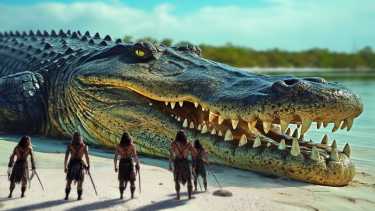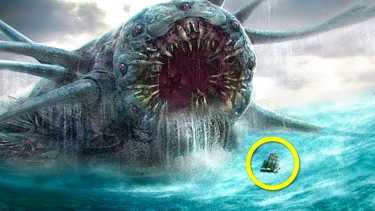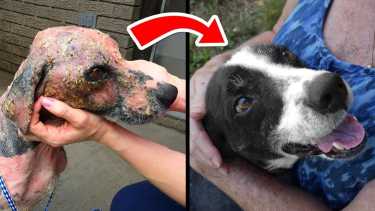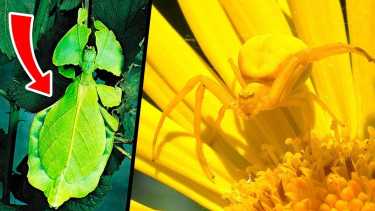Most Dangerous Animal Body Parts That Can Kill Them
Tune in for the most dangerous animal body parts that can kill them!
AnimalsHorns, tusks and tails are some really cool parts of animals we often admire. But these animal features aren’t just for fashion! Many double up as deadly weapons that animals put to the test in brutal battles and challenges for survival.
What’s worse is that sometimes these deadly weapons can turn against the animals themselves! From ingrown horns and razorblade tails to owning the world’s most treacherous bowels, these are some of the most dangerous animal body parts that can kill them.
The Headache from Hell
Horns are the fancy headsets sported by animals like cattle, sheep, goats, and antelopes; and they are made from keratin, the same protein that makes up our hair and nails. But as terrible as a bad haircut or manicure can be, you’d take that any day over an ingrowing horn!
Just like your nails, horns grow continuously and start to curve as the animal ages. Like Wiltshire horn sheep, whose horns typically grow and curl in front of their faces. While most grow out harmlessly, the inward growing horns can curl up dangerously close to their heads.
Fortunately, this sheep below only ended up sporting hilarious home-grown spectacles.
However, sometimes nature can get its angles really wrong, like with this poor ram below who lost the genetic lottery. The curvature of his horn has ended up growing into his own skull, eventually killing him.
Having rocks and branches around in the wild allows animals to rub and grind away at their horns to keep them in check, just like trimming your nails. But in this case, it seems the ram possessed faulty genes that caused his horns to grow at an acutely tight angle and into his own head!
Though faulty genetics aren’t the only cause of ingrown horns. When males of these species fight for territorial dominance, they’ll butt heads to show the other who’s boss.
However, blunt force impact during these butting battles can rupture horn plates and displace horn growth, causing horns to grow at extreme angles and inflict wounds on the animals themselves!
That’s exactly what’s happened to this poor bighorn sheep. His horn growth plates have been shunted further back onto his head, causing his horn to grow in such a tight curl it’s ended up rupturing his nose!
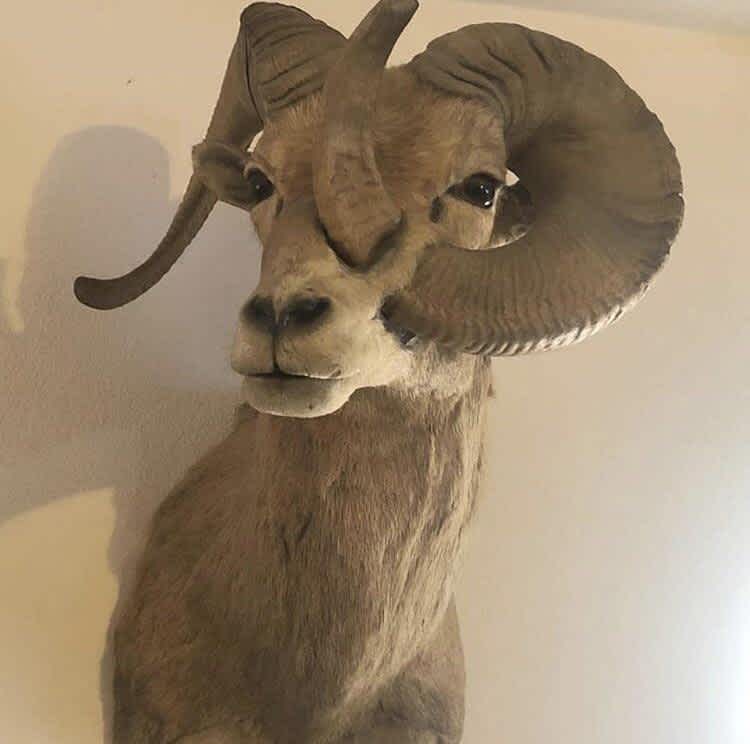
Animals are also more likely to be injured by horn plate displacements during rutting season if they already have genetic faults. This can make their horns weaker and more fragile than their opponents; an unfortunate combination suffered by this unlucky African kudu below!
This is an antelope whose faulty genes left it with a weak left antler that has been fully inverted by a brutal blow from its opponent during a rut. Incredibly, this tough kudu somehow survived the injury.
However, the lack of sight he suffered from probably didn’t help when he came face to face with a hunter. So bad genes, a bad rut, and a bad hunter; they do say bad luck comes in three!
Wild animals aren’t the only ones who can suffer from ingrown horns though, as domesticated cattle can be inflicted with them to! Most farmers who don’t like messing with the sharp end of their cattle dehorn new calves at birth.
However, poorly performed dehorning can lead to ingrowing horns later in life. It can also be caused by adolescent bulls fighting one another and fracturing their horns, causing them to grow at some seriously wonky angles, like the dabbing bull below!
Though luckily, attentive farmers can always offer a helping hand. Using a wire cable, it's possible to thread it through the curve of the horn and gently saw the dangerous end off without causing the cow any harm.
Boar-ing Through
When it comes to big, intimidating, curving tusks, no animal models them quite like the Babirusa. This boar hails from Indonesia and is a species that first emerged over 35,000 years ago. They almost look like horns, but the tusks of the babirusa pig are actually it’s upper canines piercing through the skin of its face!
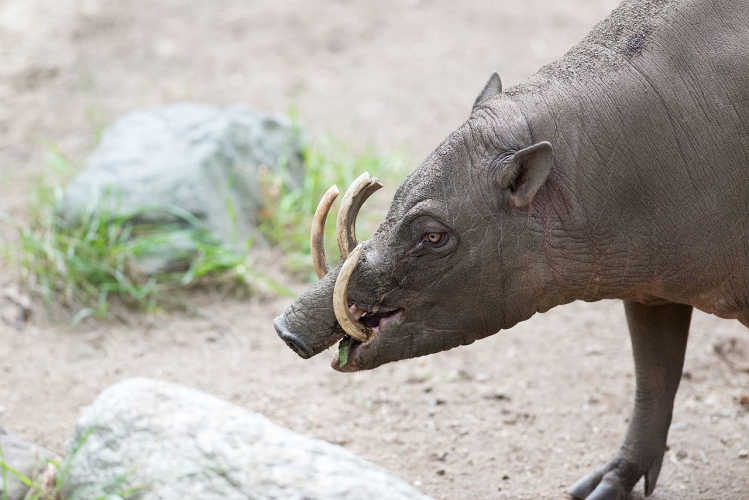
These terrifying tusks are believed to have evolved to protect their eyes and throat from the slashing lower tusks of battling males during the competitive breeding season. Though Indonesian locals believe they use them to hang from trees, lying in wait for females, only dropping down when the ladies appear.
Fortunately, this is just a myth, so you don’t have to worry about one of these pigs dropping on your head any time soon!
While the babirusa’s tusks may help them win mates, this pre-historic design has some serious drawbacks. If a male babirusa does not grind his tusks through regular activity, the tusks continuously grow up to 12 inches long and can end up curling back into the boar’s own skull!
Depending on how far they penetrate, this can blind the boar or, worse, kill it. Imagine winning all the ladies, just to be killed by your own teeth! What a way to go.

Stuck In A Rut
Instead of sporting horns or tusks, most deer have sets of antlers growing out of their heads, like majestic crowns for these creatures!
Unlike horns which are made of keratin, antlers are made entirely of bone. Sounds pretty permanent, but antlers are grown and shed annually, which coincides with the beginning and end of their breeding season.
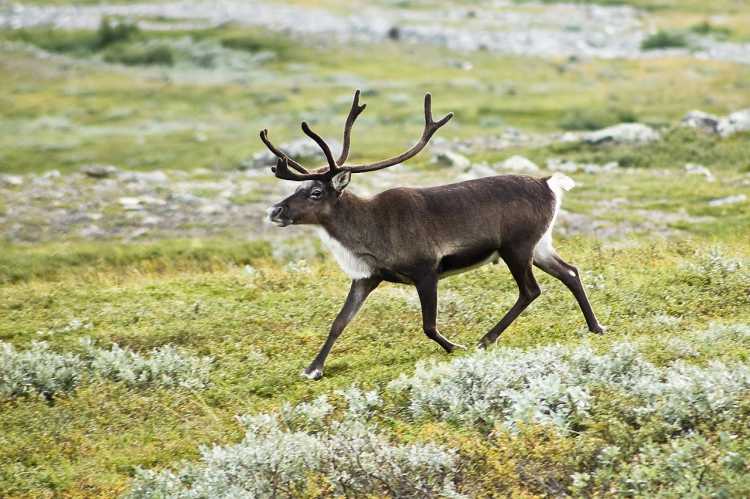
Developing antlers are covered in a protective, blood-vessel rich skin known as velvet. But once the antler beneath is fully developed, the velvet is shed by the deer in a rather grim looking fashion.
But shedding velvet doesn’t harm the deer, in fact they eat it as a nutritious snack. Like the human equivalent of eating your own scabs!
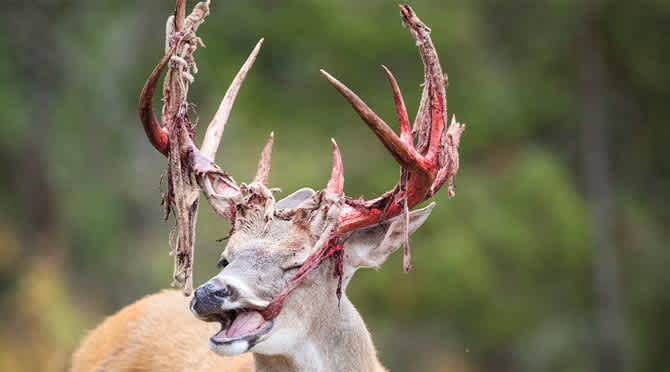
Once the velvet is shed and the antlers are fully developed though, the male deer, called stags, put them to the test in fierce rutting battles as they fight for dominance over available mates.
A stag barely eats or sleeps during the rut and can lose up to a third of its body weight during a fortnight of constant warfare! Common injuries include puncture wounds, gouged out eyes, broken legs, and brain abscesses from torn off antlers.
Worse still, deer antlers can get locked together, meaning they can end up stuck with their own worst enemy indefinitely! In more extreme cases, one stag can end up ripping the head off its rival!
While fighting with antlers is dangerous, just sprouting antlers can be a deadly feat, with some serious abnormalities causing them to grow out of control! A series of genetic factors can cause a buck’s antlers grow monstrously large, but that means he can hardly move his head and is at constant risk of losing his balance!
But that’s not the worst thing that can happen to them. Growing antlers possess a rich blood supply, but if the soft bone tissue is damaged during its development, it can cause a blood bag effect.
This is where ruptured arteries just pool blood into the velvet casing, like what’s happened to this poor deer in the footage below.
In other cases, deer carry genetic traits that can cause oddities, such as drop tines (points where the antlers grow down) or even become inverted. This can cause serious problems during rutting season if the deer ends up being stabbed by their own antlers!
Though genetics isn’t the only cause of drop tines, injuries inflicted on the deer during rutting season can damage the nerves affecting the way future antler sets grow. Stranger still, skeletal injuries on other parts of the body can affect how antlers grow!
Injury to a hind limb will result in abnormal antler growth on the opposite side, while injury to a front limb will affect antlers on the same side. So, a deer with a broken hind right leg could end up with a wonky left antler.
Scientists call this The Contralateral Effect, where an injured buck’s internal chemistry redirects its resources to other parts of its body. So, the buck can effectively speed up the healing of skeletal injuries by sacrificing the bone and blood used to make an antler!
Terrible Toenails
Donkeys and horses don’t have horns or antlers like deer or cattle do. But they do have hooves, and, just like horns and antlers, these can grow out of control!
Hooves are actually an extra thick toenail, which evolved from the enlargement of the middle toe of the animal’s foot bone millions of years ago. And, just like human toenails, if they aren’t cut or ground down regularly, they keep growing into curled, gnarly shapes.
But overgrown nails don’t just look cursed! They also have serious effects on the animal’s health. A horse with overgrown hooves will walk on the balls of its feet, causing the tendons to overstretch, resulting in arthritis, muscle atrophy and bone loss!
Over a long enough period of time, this becomes so painful that the animals become unable to walk at all! Unable to reach food or water, in many cases this can lead to the animal perishing.
Sadly, in domestic horses, overgrown hooves are usually a result of neglect and poor treatment. Donkeys and horses unable to wear down their hooves naturally by walking on hard surfaces are instead kept in tight, cramped conditions. But all they need is a good manicure.
Kamikaze Ants
So far, we’ve covered some large animal weaponry, but there are some badass bugs in the insect world that can turn themselves into tiny grenades. One of them is Colobopsis explodens, a species of ant found in the jungles of Southeast Asia.
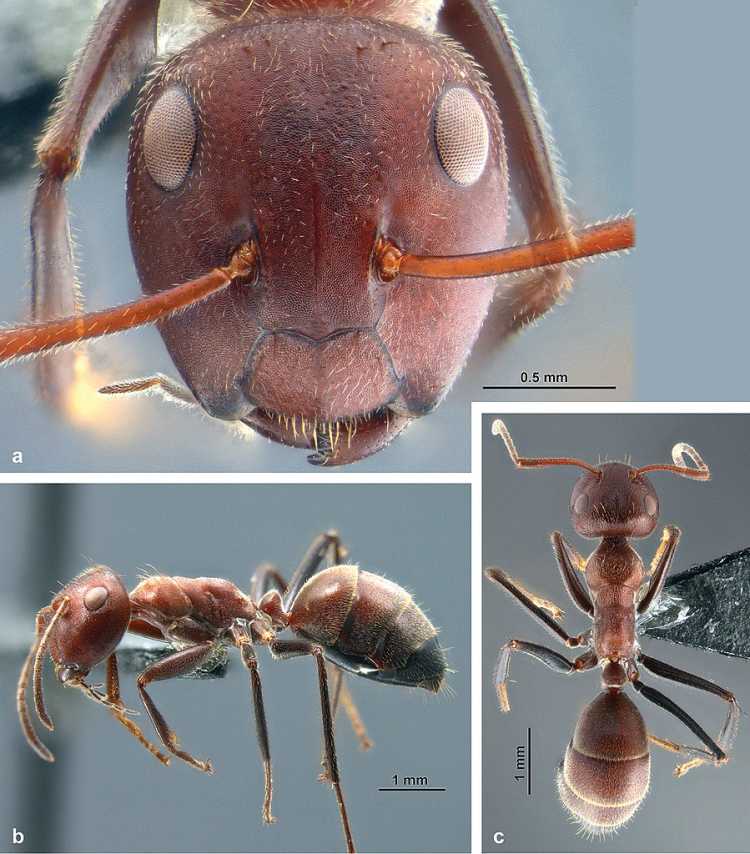
Like other ant species, Colobopsis explodens ant colonies are run by worker ants who forage for food and maintain the nest. But if the colony is ever attacked by a rival ant species, these worker ants can sacrifice themselves and take their enemies down with them in one final explosive act!
That happens because poison-filled glands run the entire length of the ant’s body. So, when combat takes a turn for the worse, the worker ant violently contracts its abdominal muscles causing these glands to rupture.
The ants die almost instantly, but this act isn’t in vain. Their contraction sprays a sticky secretion in all directions and encases the ant’s enemies within it. Horrifyingly, this corrosive chemical glue acts as an irritant, entangling and immobilizing all nearby insects!
Apparently, the thick glue-like chemical also smells likes spicy curry. But don’t be fooled into thinking it would go nicely with a side of rice, because it is grossly inedible! This deters any future predators from trying to attack the colony again, letting other insects in the jungle know these badass ants aren’t to be messed with!
Amazingly, this is also a kamikaze method performed by a species of termite found in Vietnam: Globitermes Sulphureus. Between 5-10% of these termite colonies are made up of soldier termites with poison-filled glands strapped to segmented bodies.

When the termite colonies come under attack, these soldier termites deploy and fight off the invading hoards. But their final weapon of defense is also their greatest offense! These termites can rapidly contract their mandibular jaw muscles, compressing the walls of their poison sac glands and spraying a thick yellow gooey liquid over their attacking foes.
This liquid rapidly hardens on contact with air, like the insect equivalent of cement, and traps ants and other enemy termites in a sticky death alongside the soldier termite. Who knew small-scale warfare could be this extreme?!
A Fatal Sting
Have you ever been stung by a honeybee? It’s the worst! But as much as it hurts, it’s actually the bee that comes away with the raw end of this deal! That’s because their stinger is left behind in your skin!
This causes a massive abdominal rupture, tearing away parts of the bee’s digestive tract, plus muscles and nerves, resulting in the bee’s death. Suddenly that little sting you feel doesn’t seem so bad!
Although, this isn’t what nature intended. In fact, honeybees’ stingers have evolved to contain two micro-rows of saw tooth blades that can pierce the hard exoskeletons of insects trying to invade their hive. With the way they’re designed, the bees can use their stingers repeatedly to attack.
But a mammals’ fibrous skin snags on these saw blades as the bee tries to pull its stinger out, and so to escape, the stinger must be torn from their bodies. So, bees may be fierce combatants in the insect world, but their stingers really backfire when they’re used against humans!
Cannibal Kids
Sometimes it’s not the body part an animal has, but what their bodies produce that can turn out to be their own worst enemy! And if you don’t believe it, then just look up for the birthing process of African Social Spiders.
In the breeding season, the female spiders of this species produce higher quantities of enzymes and gorge themselves on as much prey as they can catch. Then, after the spiderlings hatch from around 30 eggs in their brood, mother-dearest regurgitates the slurry of digested prey to serve up to her children.
Nothing quite like Mom’s homemade cooking! But dessert is the real treat. The huge amount of enzymes mommy produces don’t just break down the prey, they also start breaking her body down from the inside out! So much so that she dies shortly after serving up the meal, and the baby spiders will then also feast on her corpse!
Nothing like a fresh serving of momma’s own juices to help you grow up big and strong.
Razor Tails
From a glance, the flappy, pancake-like form of a sea-dwelling stingray doesn’t look all that dangerous! But a closer look at the tails reveals something that even they have to protect themselves against.
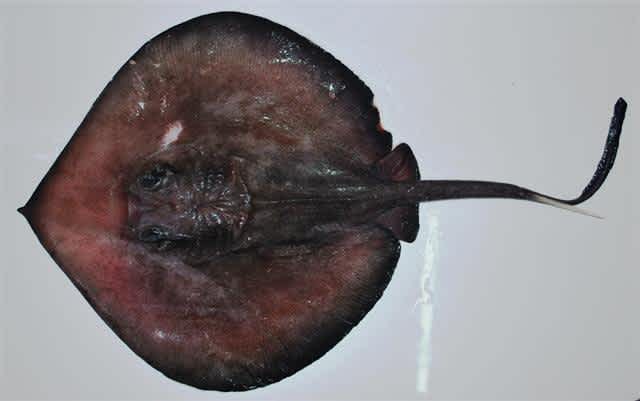
A stingray’s tail is long and tapered like a whip, at the end of which are venomous barbed spines. The complex venom contained in these spines triggers intense pain, and the spines themselves are so sharp they can puncture through muscle like a knife!
Parts of the spine can also break off and remain lodged in the skin, injecting venom and causing a nasty infection. Even the toughest surfer dudes have been brought to tears by stingray wounds!
But the stingray’s barb can also inflict damage on the stingray themselves. Rays birth live young, carrying their pups in a womb much like humans do. But these barbed tails are so dangerous that fetal stingrays have developed tail caps to prevent them from lacerating the mother stingray internally!
If a stingray pup drops their tail cap too early, they can cause serious pain and internal damage to the mother. It would be like if human babies had razor blades attached to their feet while still in the womb! Like childbirth wasn’t enough of a nightmare already!
So Shocking
Famous for their ability to produce an electric shock, electric eels are one of the few animals that can be credited as having a real-life superpower! For electric eels this electrical ability can have shocking results for them as well.
Despite the name, electric eels are not true eels. They’re actually a type of knifefish and their preferred hangout spots are in the muddy streams of the Amazon basin in South America, where they use their electric sparks to hunt and stun prey!
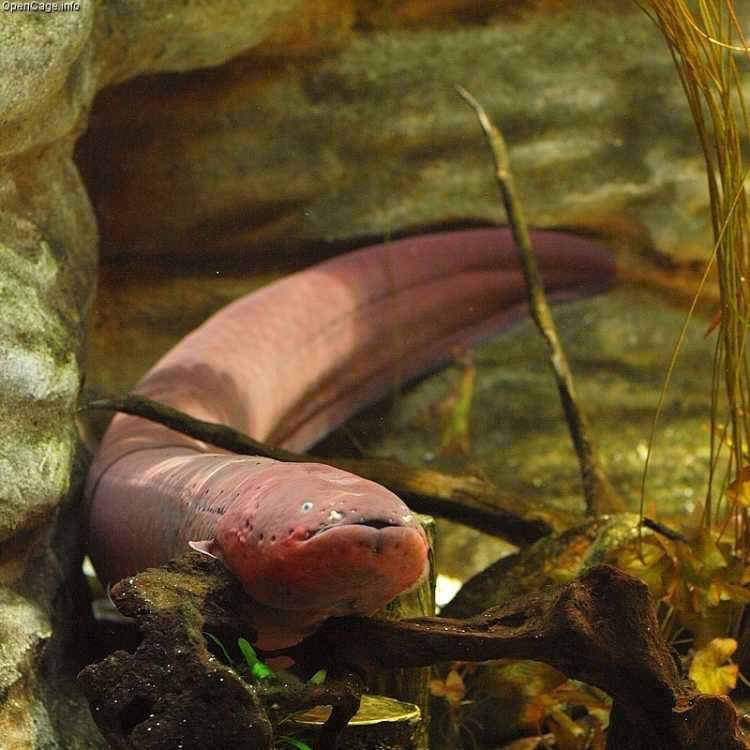
The electric superpowers of this fish come from around 6,000 specialized cells called electrocytes inside the eel’s slender body that store power like tiny batteries. When threatened or attacking prey, electric eels can produce a discharge of up to 800 volts!
The mains voltage in the U.S is set at a maximum of 120 volts. Plugging an electric eel into a mains socket would overload and blow the circuits of a whole house! So, best to leave them unplugged.
But this electric ability can also have deadly consequences for the eel itself. If such a strong electric current were to pass through the heart or brain of the eel, it would kill them instantly. That’s because all the organs of an electric eel are squished up by their head. The rest of their long, slender body is just a battery-like tail!
When charging up, electric eels straighten out into a stiff rod before curling into a U-shape with their head placed slightly ahead of the end of their tail. This is because an electric current takes the shortest possible path along a potential gradient.
But the potential gradient for an electric eel lies between the top of its positively charged body, right behind its head and organs, and the end of its negatively charged tail. If the eel miscalculates where it positions its head even slightly, it'll be toast! The electric current passes straight through its heart, killing it.
These errors are likely to occur when the eel is stressed or threatened by a predator. Though it’s only a mistake an electric eel will make once, as there are no second chances when you’re handling high voltages.
Deadly Bathroom Breaks
Sloths, the adorably slow mammals that live in tropical treetops, look like they don’t have a care in the world! But in reality, a sloth’s bowel movements are so deadly that it risks its life every time it goes to the bathroom.
Scientists have described their toilet times as more akin to childbirth than the bathroom breaks humans take, with a sloth losing up to 1/3 of its body weight from a single poop. Fortunately, this is only a bathroom break sloths have to make once a week thanks to the sluggishly slow rate of their metabolism.

Pooping is the only reason for a sloth to regularly leave its tree and it’s usually the only time they will stand upright. Once the sloths make their way down from their trees, they do a special ‘poo dance’, shuffling around to dig a small hole to defecate in.
After defecating, they do another little dance to cover up their droppings with leaf litter, before slowly climbing back up the tree. So, if you’re ever in the rainforest and see a dancing sloth, he isn’t happy to see you, he’s answering the call of nature!
However, in descending from their tree’s, sloths compromise their camouflage. Sloths move so slowly that algae grow in their fur and provides the perfect disguise for them to conceal themselves amongst the green canopy foliage of the rainforest. But on the ground, they become an obvious and slow-moving target for predators.
This is why over half of all sloths die while outside their trees, where they’re snatched up by waiting predators. Who would have thought the need to empty your bowels could become a life-or-death matter!
With that said, why do sloths make this perilous journey in the first place? Why don’t they just poop from the safety of the tree canopy? The short answer is, nobody knows!
Some theories suggest that pooping from the canopy is noisy, and gives away their otherwise expertly camouflaged location, while others think it might be to socialize with other sloths. Perhaps they just really enjoy doing their little poo-gie boogie! Sounds like it’s the highlight of their week!
Rollover Risk
Tortoises are famous for the shells that shield their bodies. The ribs and backbones of tortoises are fused to the bone plates in their shells, and it’s this heavy armor that weighs them down, causing their slow, shuffling movement.
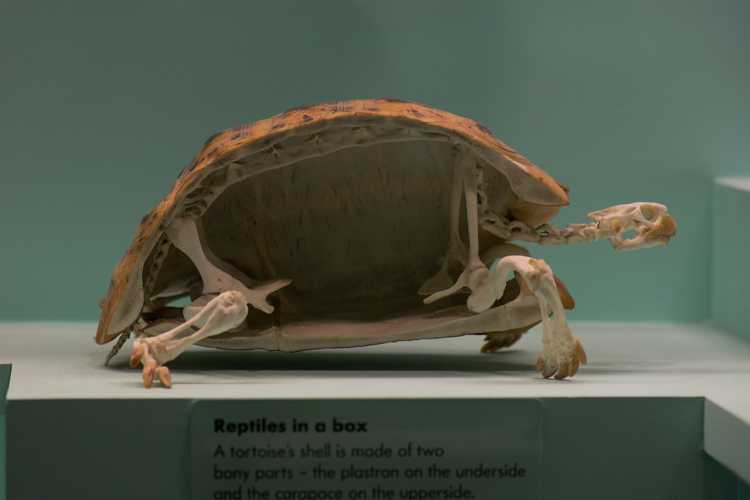
Though shells are a useful shield to hide inside when threatened, a tortoises’ shell makes the animal top-heavy and liable to roll over. While it may look kinda funny squirming about on its back, in the wild, this could be a death sentence because a tortoise on its back with little ground purchase is completely trapped by its own shell.
Unable to eat, drink, or move out of the blazing heat of the sun, it is completely vulnerable, and could be picked off by any nearby predators, or die of dehydration. Tortoises themselves recognize this danger so instinctively, that they have been frequently documented helping fellow flipped tortoises by ramming them to try and tip them back over.
However, this kindness only extends so far, as during the mating season male tortoises spar one another and compete to flip their opponent onto their back! Who knew a simple shell roll could be the ultimate knockout move!
Mad Marsupial
August in Australia is an odd time. While many are enjoying the country’s last month of winter, in the outback there are thousands of small mouse-like creatures literally falling apart at the seams.
Antechinus are pocket-sized marsupial creatures that take their mating season to a whole new extreme. If you thought rutting deer and battling babirusa were fierce, then you’ll be stunned by the male antechinus, as it treats the mating season as its End-of-Life goal.
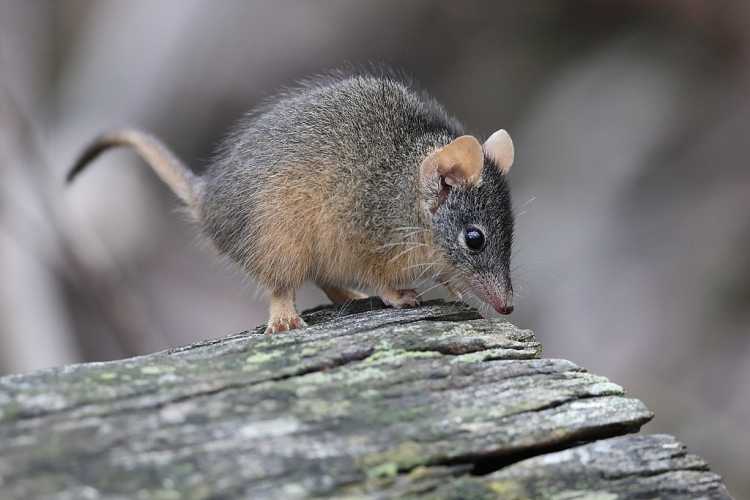
Overwhelmed with testosterone and stress hormones, this furry marsupial will go completely bald and start bleeding internally. His immune system fails to fight off incoming infections, leaving him riddled with gangrene, and all his remaining energy is diverted towards the constant search for females!
Indeed, these little marsupials go mating mad, and can engage in mating sessions that last up to mind-blowing 14 hours! At the end of this three-week frenzy, these tiny creatures will be crawling around like zombies, except instead of moaning for brains, they’ll be after partners.
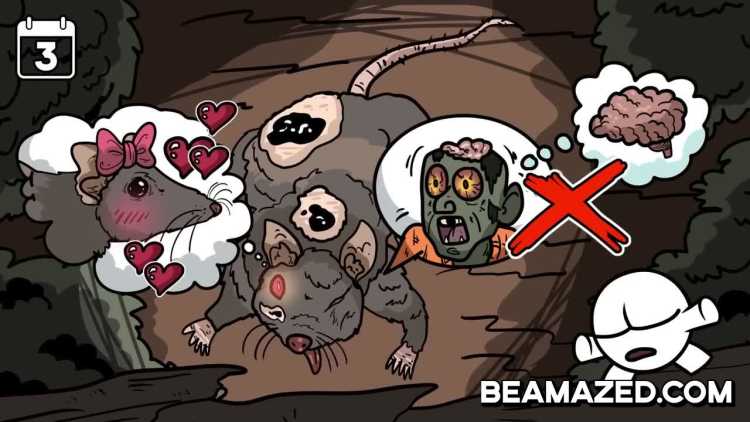
Before even their first birthday, the males will die of exhaustion as a result of this frenzied breeding season. A single male will be able to father multiple litters, and females can give birth to up to 10 babies a season! Well, at least they go out with a bang.




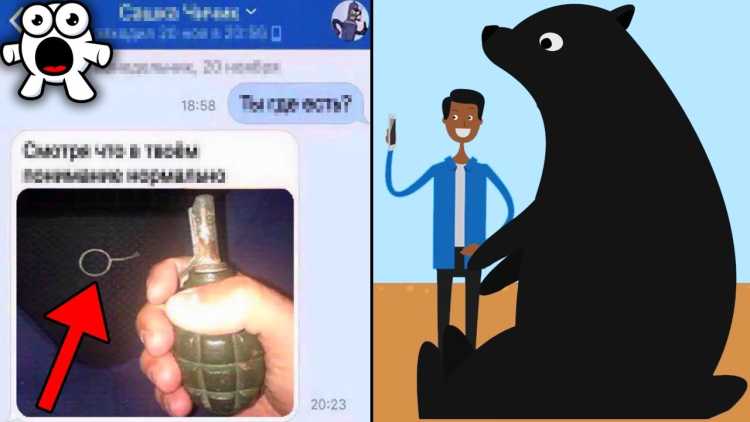

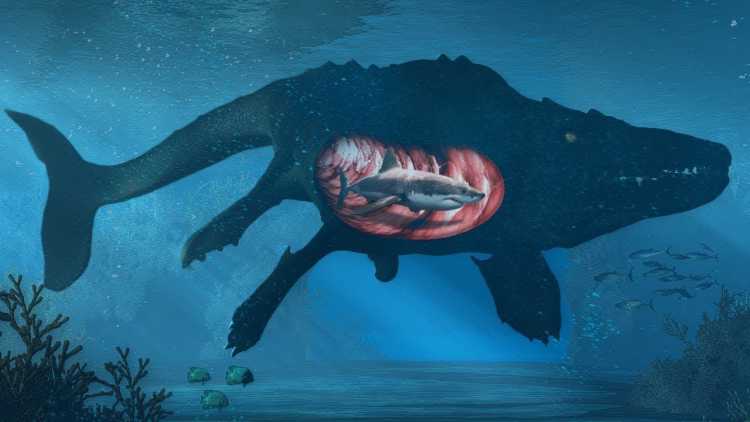




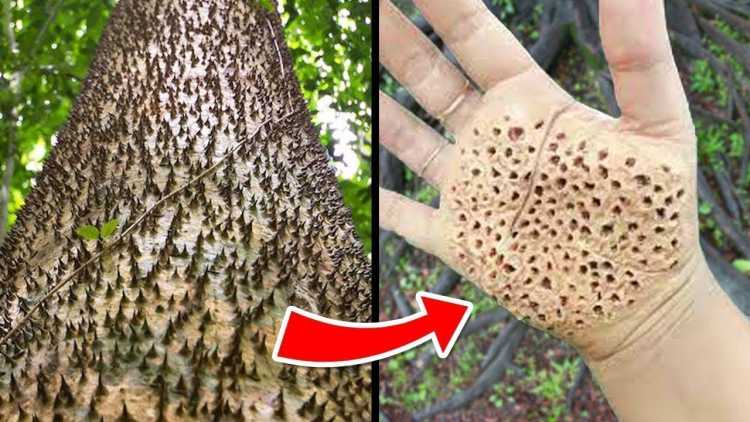

![Embarrassingly Dumb Ways People Died - Darwin Awards Winners [Part 14]](http://images.ctfassets.net/l031eph9pzsg/686De1sLP59fCNWLkbDwm5/4031ad820164610867ececf9513ce5ce/embarrassingly-dumb-ways-people-died---darwin-awards-winners-_part-14_.jpg?w=750&h=422&fl=progressive&q=50&fm=jpg)
